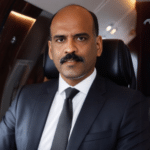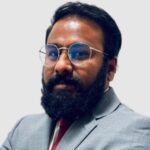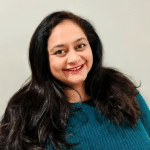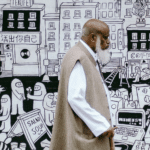Image Commercially Licensed From: Unsplash
Dr. Liz Wilson, behavioral scientist and founder of Include Inc, has a bone to pick with Erasmus. The 16th-century philosopher said, “In the land of the blind, the one-eyed man is king,” implying that greater ability equals greater success.
Dr. Liz bucks the scholar’s proverb by asserting that success depends on the environment rather than one’s ability. Admittedly, her unique perspective on diversity, equity, and inclusion (DEI) comes from an unlikely source — a Tinder date
What Dr. Liz learned about DEI during a Tinder date
One year shy of 40, Dr. Liz found herself on the dating scene. What’s more, she was attempting online dating for the very first time. She signed up for a Tinder account, created a dating profile, and met the first matches with a valiant effort. After 17 failed matches, however, she found she had lost all appetite for chit-chat over technology.
“I cut the texts and emails short by telling match number 18 that if he wanted to meet me for a drink, then I was happy to get to know him in person,” she recalls. “That’s how I went into the date without much more than a profile photo.”
In terms of knowing what to expect, Dr. Liz did not have much to go on. But armed with a Ph. D and an eight-hour workday to e-stalk her date, Dr. Liz pieced together a profile worthy of a forensic scientist. The investigation took a turn, however, when she uncovered an obscure news story saying her upcoming date had played for a rugby team called the Australian Deaf Wallabies.
“The only word that caught my attention was ‘deaf,'” remembers Dr. Liz. “The next thing I know, I’m googling how deaf someone has to be to qualify for the Deaf Wallabies. Only three things kept me from canceling that date. First, I didn’t want to be ‘that person.’ Second, I memorized the sign language alphabet at seven years old. And third, his profile pic was not one I cared to turn down.”
That evening, Dr. Liz met her date in a crowded burrito bar. The restaurant was so noisy that she found herself faking her way through most of the conversation. “I couldn’t hear a single thing he said,” Dr. Liz recalls. “Ironically, he understood every word I said to him that night because he could read my lips. In that environment, I found that I was the disabled person; I was disabled by my environment.”
Dr. Liz’s takeaway from the date was profound. “We create disabilities when we create environments,” she says. “Ultimately, environments determine who is able and who is not.”
That evening, Dr. Liz realized that excluding environments is nothing more than a human construct. In addition, she took her insight one key step further. “If we can create exclusion, we can create inclusion,” she reasoned. “After all, we create lights to allow us to see in the dark and ladders to allow us to reach greater heights. Inclusion is about breaking down barriers, making accommodations, and creating environments where everyone thrives.”
How to create the environments that lead to an inclusive world
Though Dr. Liz’s concept for DEI is revolutionary, she is not the first to put the idea forward. In fact, her Tinder date happens to be a modern twist on H. G. Wells’ 1904 short story, “The Country of the Blind.”
In the story, a traveler named Nuñez finds his way into a hidden Ecuadorian Valley isolated by steep mountains. While exploring the valley, he is struck by the oddity of a city filled with windowless houses and carefully curbed pathways. Eventually, he discovers the valley’s entire population has adapted over generations of blindness.
Nuñez decides to use sight as a means of ruling over the valley but is quickly thwarted. He discovers that even simple daily tasks are challenging to carry out in a city designed for people who cannot see. The valley’s residents pity and care for him, though he eventually leaves the isolated valley, never fulfilling his plan to become king.
Well’s fable illustrates the same lesson as Dr. Liz’s Tinder date — when it comes to inclusivity, environment trumps ability. In other words, in the land of the blind, the one-eyed man would probably not be king after all. Were such a place to exist, the environment would enable people without sight to succeed.
“The first step to creating a world where people are included is equipping people to be inclusive,” Dr. Liz asserts. With this goal in mind, she designed the groundbreaking practical approach to including all people and intersectionalities using the 8-Inclusion Needs framework.
Dr. Liz envisions a world where people value differences. “The exclusion people with disabilities face is not due to differences,” she explains. “That exclusion is due to the barriers we put in people’s way. Celebrating labels will not enable us to achieve inclusion. The way forward lies in designing environments where all people thrive.”



















